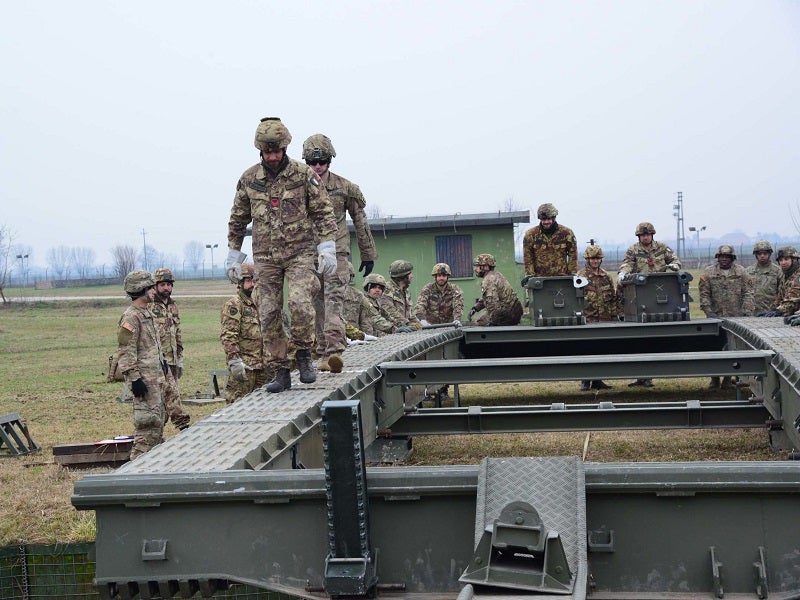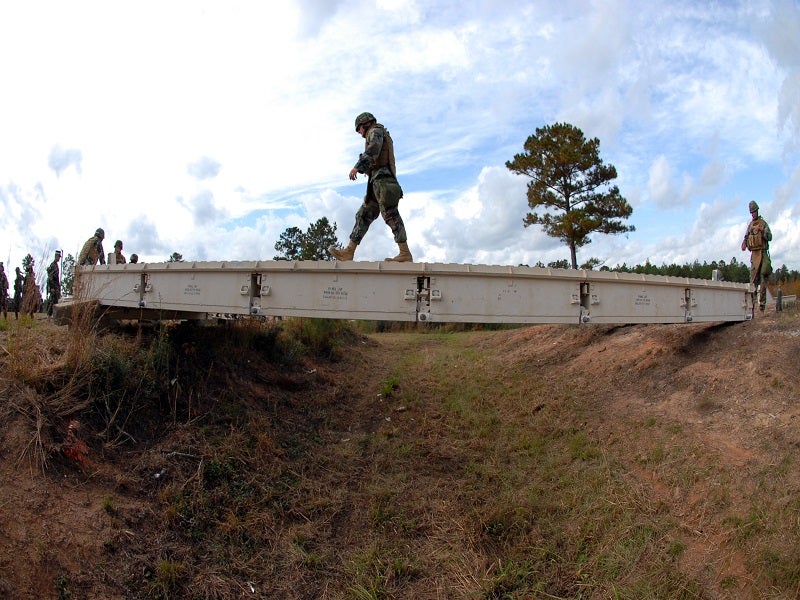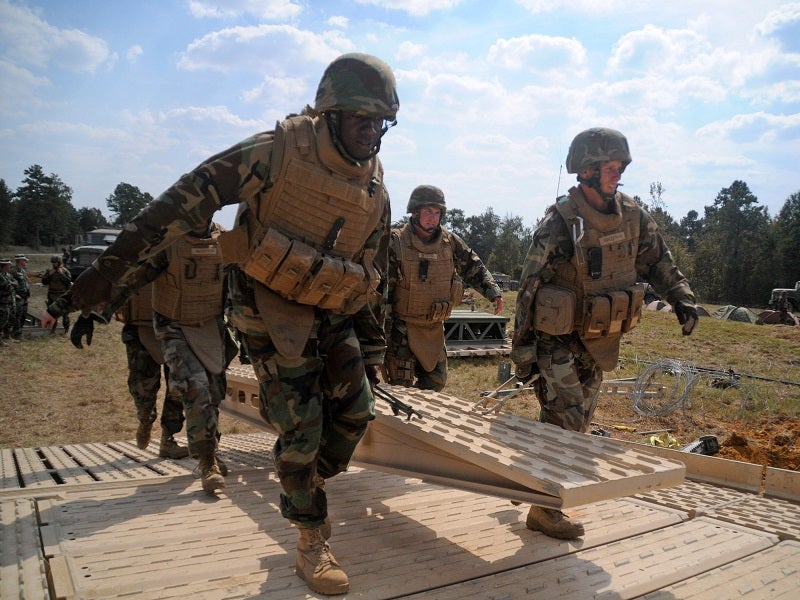The medium girder bridge (MGB) is a lightweight, modular military bridging system that serves the requirements of a variety of military operations, including tactical or disaster response scenarios. It is manufactured by WFEL, a tactical military bridges provider based in the UK.
Developed primarily for the British Army, the MGB has been operational since 1971. WFEL supplied more than 500 MGBs to 40 armed forces across the world, to date.
The bridging system saw many enhancements over the years to suit the evolving military requirements.
Orders and deliveries of medium girder bridge
The UK Ministry of Defence placed an order worth more than £46m ($59.35m) for 17 MGBs in October 2020. The bridges will be used to cross wet and dry gaps during military operations and emergency response situations.
The first MGB was delivered to the British Army’s Royal Engineers in July 2021. WFEL is expected to deliver the remaining bridges by December 2025.
The Australian Defence Forces (ADF) signed a £53m ($75.46m) agreement for the delivery of MGBs and dry support bridges (DSBs) as part of the Land 155 Enhanced Gap Crossing Capability Project, which aims to acquire bridge systems for land forces, in January 2016.
The first batch of the bridges was delivered in March 2018, followed by the remaining in September 2018.
MGB design and features
MGBs are easy to transport and can be assembled by hand. The key components of the MGB include piers, pontoons and ferries, which can be deployed on the field with minimum manpower.
The MGB by WFEL is a dual girder bridging system and its deck units, when assembled, provide a 4m-wide roadway and an optional walkway. The building blocks of the bridge are made of seven light-alloy components.
The bridge comprises seven components, which include a 258kg bankseat beam, a 175kg top panel, a 182kg junction panel, a 74kg deck unit, a 120kg ramp unit, a 272kg end taper panel, and a bottom panel weighing 197kg. Two of the seven structural units can be lifted by six personnel, while the remaining units require four personnel each for lifting. Two personnel are enough to lift the deck and the ramp units.
The bridge incorporates high-quality precision engineering technology. An optional reduced slope is provided to enable easy entry and exit.
MGB variants
The MGBs are available in five different configurations, including single-span, multi-span, double-storey with link reinforcement set (LRS), floating, and mechanically-aided construction by hand (MACH).
The single-span bridge can be arranged as either a single-storey or a double-storey bridge with LRS. The number of bays that can be included varies based on the gap to be crossed. Each bay approximately 1.83m long.
Each single-storey MGB features top panels pinned together to form two girders. A bankseat beam is used to join the girders at each end to form a rigid framework. The double-storey MGB, on the other hand, has girders that are made of top and bottom panels with junction panels, while the end taper panels form the sloping end of the bridge.
The floating bridge variant is available in a single or double-storey configuration. Landing bay spans of up to 26.5m are available in double-storey floating MGBs, which are suitable for areas of high water currents. Single-storey bridge can be arranged as either a floating bridge or a ferry.
Two pontoons are combined to form a pier, while three piers form a landing bay raft. The pontoon provides thrust and steering force to the ferry. Made of marine-grade aluminium alloy, the MGB pontoons are driven by a 75hp diesel engine and a jet propulsion unit. Non-dedicated vehicles fitted with demountable rack structure are used to transport the pontoons.
The double-storey bridge with a link reinforcement set features 3.66m-long reinforcing links and 1.83m-long short links that are combined to form chains under each girder. The chains are pulled by erecting the reinforcing posts in vertical positions.
The MACH version reduces the manpower required for the construction of the bridge. It can be constructed by nine personnel, while the conventional MGB requires about 25 personnel.
Construction of medium girder bridge
Single-storey MGBs and double-storey MGBs are launched using one and two roller beams, respectively. Hydraulic jacks are used to lower the bridges following construction.
The multi-span bridge comprises span junction posts that are connected by hydraulic articulators to render a multi-span capability to the double-storey bridges. The MGBs can be built over fixed or floating supports. Pontoons, piers, supports, and MGB portable pier set can also be used to deploy a multi-span MGB.
The portable pier set includes a two-legged pier that can be assembled during the construction of the main bridge. Legs with a height of up to 12m can withstand a water current speed of 5.5m/s, while legs of up to 18m can be used to cross dry gaps. The portable pier can be installed independently after positioning it in the river from a float or in a dry ravine.
The MACH bridges are built using standard MGB components and special sections that support the mechanical handling of the sub-assemblies. The MACH type MGBs can also be constructed by hand in the event of damage to the hydraulic equipment.
MGB load capacity
The single-storey MGB with a 9.8m span has a military load classification (MLC) of 70t. The double-storey MGB has a span of up to 31.1m and an MLC of 70t. The double-storey MGB with a two-span structure has a length of up to 51.5m and an MLC of 70t, while the three-span configuration has a length of 76m and an MLC of 60t.
The double-storey LRS type MGBs have a span of up to 49.4m and a MLC of 60t, while the MLC of the single-storey floating MGB is up to 60t.






